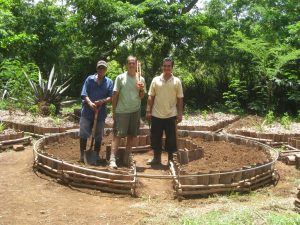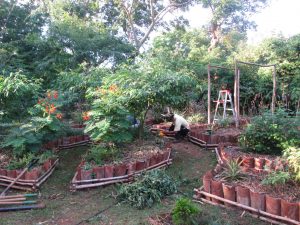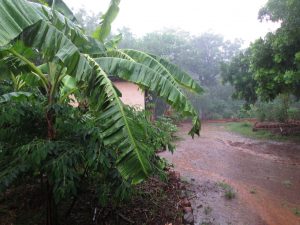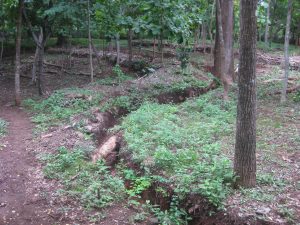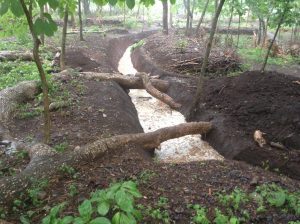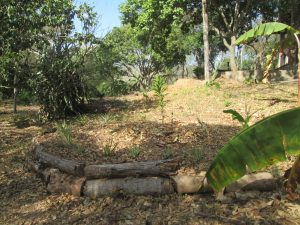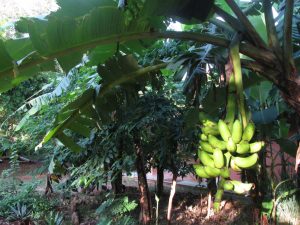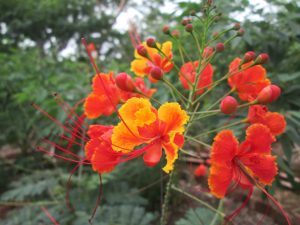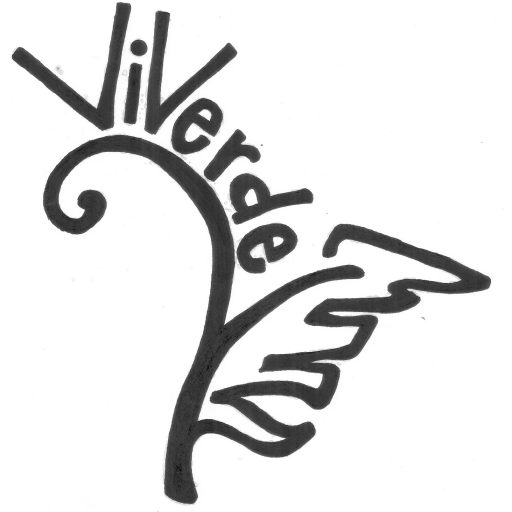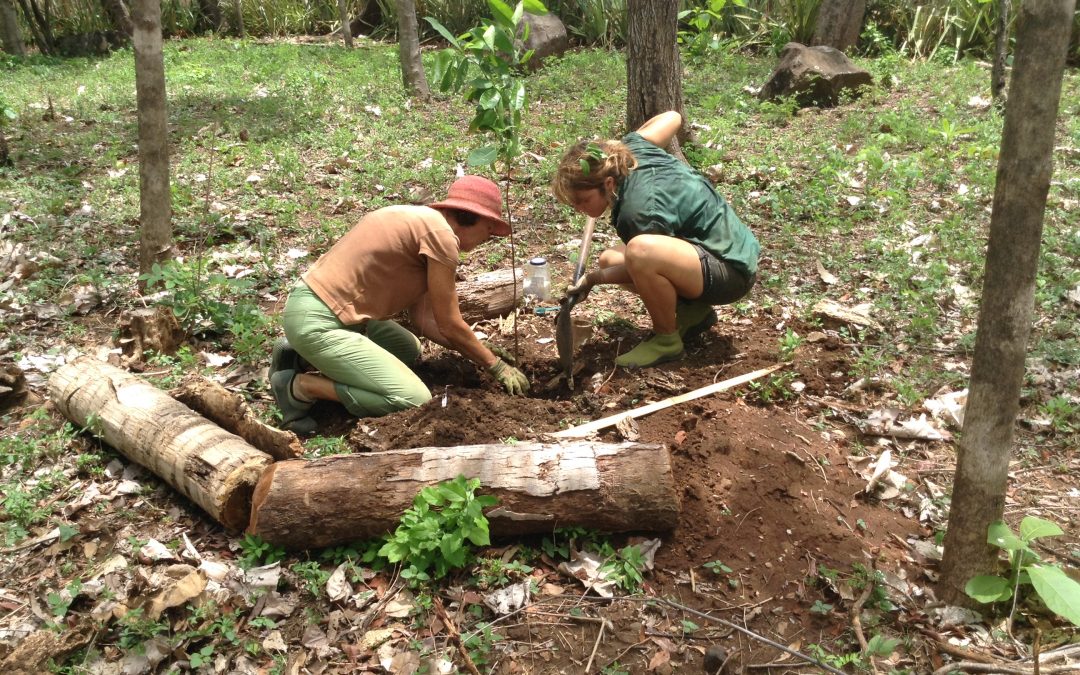In the past year and a half we have planted over 150 fruit trees and shrubs, including 40 different species: banana, avocado, lime, coconut, pomegranate, and other exotics like cacao (chocolate pod), ojoche nut, jackfruit, nispero, surinam cherry, star apple, and many more! With our warm-weathered climate, some will begin fruiting within 3-5 years!
My permaculture design course (PDC) in Costa Rica emphasizing tropical agroforestry systems has given me endless inspiration for our work here. My favorite interpretation of the term Permaculture is “the practice of designing sustainable, resilient, and productive human habitats by following nature’s patterns.”
I’ve now spent over a year on the farm and have been acting as ViVerde’s permaculture designer for the plant spaces, sculpting the land for water harvesting and efficiency, building soil, planting fruit trees, developing new garden spaces, learning what does and doesn’t grow, and reviving old fruit trees that had been lost to the jungle. We had inherited a large assortment of citrus and mango trees, coconut, starfruit, and over 100 coffee plants, to name a few.
Before planting the orchards, we needed to get the land ready. In permaculture the keys of water management are: slow it, spread it, sink it. Not only is rainwater runoff a lost resource, it also strips the soil of its most nutritious top layer. By digging a swale, a ditch that follows the contour of the landscape, you allow the water more time to penetrate into the soil. Locating swales around fruit trees sinks water where it’s most needed, and encourages deep root growth. Our biggest project was digging 60 meters of swales (1 m deep, 1.5 m wide), and channeling the runoff from the road outside into the property. Considering all was hand-dug, it is a tremendous feat!
Promoting and building healthy soil is another important element of permaculture. Mulch, defined as a “layer of material applied to the surface of an area of soil” is a technique with multiple functions and benefits. It conserves moisture, improves fertility and health of the soil (by creating habitat for microorganisms), and reduces erosions and weed growth. On the farm, fallen leaves abound, and we apply them to our orchard and gardens to imitate nature’s way on the forest floor.
With its intense wet and dry season, Nicaragua’s climate is tricky to accommodate. There are times when we need to harvest and conserve water and other times when we need to shed it – during the peak of rainy season the ground becomes so saturated with water that the back of the farm becomes a flood plain.
Last year I stubbornly made a go of trying to grow a “North American garden” and learned my lesson about growing non-climate appropriate crops. Nothing like learning from your mistakes, right? I also learned that eggplant and peppers thrive, iguanas eat the green beans, papayas spring up like weeds , root crops like sweet potato and ginger need little care and perennial greens (such as moringa, katuk, chaya) make a more beautiful and far more nutritious salad than even spinach.
I have become very interested in edible landscape design, ecological farming, and inspiring others to explore alternative methods of growing food, both in Nicaragua and in the States. The opportunity to get dirty and experiment with landscaping and permaculture techniques,work with Gerard on gravity-fed irrigation systems, propogate plants with Diane, and begin my own food forest has been priceless, and already proving to be delicious!
We harvested our first bunch of bananas, planted 16 months ago. Did you know that bananas are not trees but actually in the grass family? After a bunch is harvested, the stalk is cut down leaving room for its offspring to grow. Of the many “children” that pop up, we leave three of descending sizes and take the others to plant elsewhere.
Leguminous plants are an important element of the forest garden. They fix nitrogen into the soil, create biomass for mulching and are incredibly beautiful!
